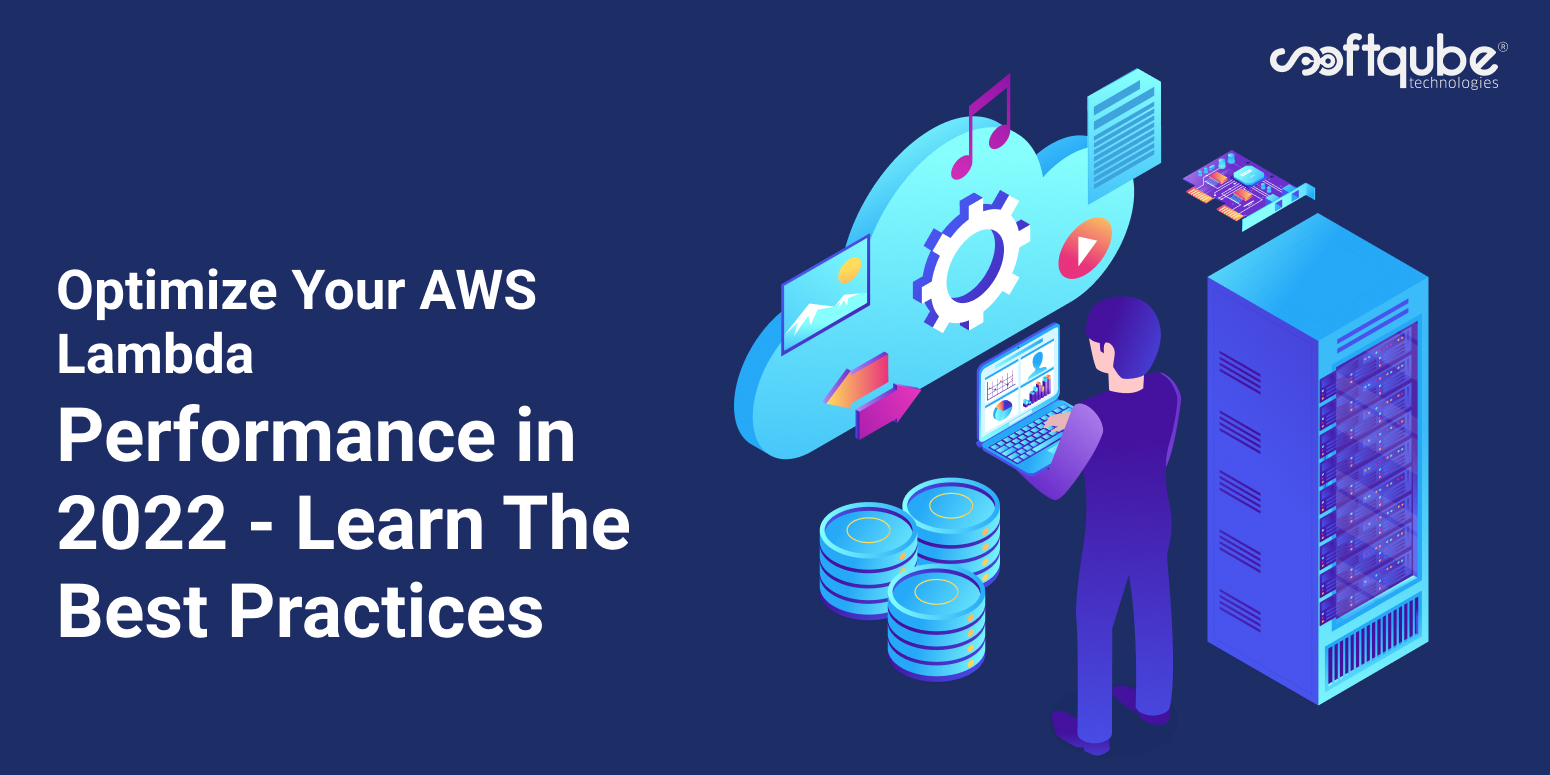Optimize Your AWS Lambda Performance in 2022 – Learn The Best Practices
December 13, 2021

The serverless applications utilize AWS Lambda as the most frequently used deployment pattern. You are free from managing infrastructure as it helps you run backend code on AWS services. The code you run on AWS is called functions. It allows you to access your own functions as well as pre-made functions. You can create events at your comfort and AWS Lambda is there to run it down.

In case if you are running large and heavyweight applications and constantly get worried about the server capacity, then you need not worry. Because AWS Lambda will let you implement your code without servers. Not just that, AWS Lambda performance optimization will enable you to create the logic for workload management and event integration. Besides, when you use Amazon Lambda, you do not require any kind of third-party administration or external packages are not required to be implemented as a part of the backend process.
So what exactly do you need to do?
All you have to do is upload the compressed folder that contains code and Lambda. This will automatically identify the execution and continue with processing power allocation that is totally compatible with any amount and type of incoming traffic.
Predicting the performance of AWS Lambda systems is quite a task. However, we have ensured here in this blog to take you through some of the best practices that could be implemented and can be set as a benchmark when you configure the AWS Lambda performance.
AWS Lambda Performance Optimization – Best Practices for 2022
There are some typical factors affecting Lambda’s performance such as memory size, runtime environment, concurrent processes, coding processes, application start time and load time, code optimization, etc.
Here is the need to focus on optimizing the performance because it helps tune the above-mentioned factors. All you need to do is follow the best practices during the code execution process. Let us dive into them right away.
Lambda Handler Positioning
You need to keep the Lambda handler separate from the core logic. This practice would help the developer in increasing the functionality of unit-testing in the code.
Reuse Execution Environment
Make sure you avail maximum usage of the reusability of the execution environment, as it can increase the function performance. When there are more invocations to a particular instance, initialize those instances so that the same instance can be reused multiple times, and hence witness a remarkable reduction in the execution time of the function, thus increasing the performance.
Also, as the instance is being invoked multiple times, the issue of data leakage is possible. Hence, developers should not utilize the run time environment for user data storage, event handling, etc., for security implications and rather utilize the execution environment.
Create Persistent Directory Connections
A provision says that Lambda might eliminate the idle connections with the directories in a given time. When a developer tries to invoke these idle connections, they might face an error. Therefore it is recommended to create persistent connections with the libraries and directories. You can use the keep-alive feature present in the runtime environment to maintain the persistency of its connections.
Use Environment Variables
For any function that needs to pass the operational parameters, then it is highly recommended that the developer must use the environment variable present in the runtime. Like for example, while coding with Amazon S3, one can create the environment variable as the name of the S3 bucket, instead of rigorously coding it.
Control on Dependencies
Amazon Lambda is filled with a package of multiple libraries in its execution environment. Also, periodically, Lambda introduces certain updates in its features and functionalities to provide its users with a set of features with the latest trends and technologies.
With the periodic introduction of those updates, there is a possibility that certain functions present in Lambda also change. Hence, this might also result in dependency on some functions. To overcome this, it is advisable to include all the dependent functions into a single package during the deployment phase.
Reduce Package Deployment Size
It is suggestible to design your package of functions in tune with what is required in the runtime environment. This helps to reduce the time taken for package deployment that initially needs to be downloaded and used when the functions in the package are invoked. For example, it is advisable not to upload the whole library for the AWS environment for deploying the functions of the applications built in Java or .NET Core. Instead of this, the developer can select only the dependent modules of the code that pick up only the AWS environment’s required elements.
Reduce Unpackaging Timings
You will save a lot of time when you spend it lesser on unpacking the packages that need to be deployed. Instead of creating larger class files in Java, for example, it is recommended that the required packages and functions be included in the files with the .jar extension, located in different libraries or directories. This results in faster execution of the Java application.
Decrease Function Dependencies
We recommend you make the dependencies among the functions less dependent. Mostly, a developer will choose the best and the latest framework that is introduced in the market for his app execution, no matter how much heavier they are. So, in Lambda, the developer should choose a lightweight framework based on their requirements for the applications. The simpler the framework used to execute the code, the lesser the dependency among its elements and components in the libraries.
Frequent Use of Code Recursion
Utilize the code recursion at the maximum levels. Recursion is the function as it calls itself to be and continues to show up until certain criteria get fulfilled. This leads to infrequent unnecessary invocations of the functions. It also increases the time and space complexity of the functions. This also increases the cost of the execution of the function in terms of processing power. Not only this but even if there is a slight change in the code, it may affect the complexity and dependency of the function drastically.
Rigorous Performance Testing
You must regularly test the performance of your Lambda Function. This activity becomes more crucial as it ensures that the developer picks the memory’s optimized configurations in terms of size. If there is a slight increase in the size of the memory, it may also affect the CPU computation power that is made available for executing the developer’s code. You can determine the memory usage of a function based on the number of invokes, and it can be viewed using the AWS CloudWatch Logs tool.
Load Testing Execution
During the process, you will have to carry out the load testing for the Lambda function. This is necessary so that the developer can find out the timeout value of the function. This also gives an estimation of the running time of the function the developer has invoked, and based on this; the developer can come to know about the complexities and dependencies present in the function.
Removal of Functions
Once you complete using the AWS Lambda functions, you must them. This practice of removing the unused Lambda functions will enable the developer to optimize the deployment package’s size to be executed in the runtime. Also, it will reduce the package size and decrease the dependencies.
Key Takeaways
Equipped with this knowledge, you can now make a better decision on how to configure your AWS Lambda functions. These key practices will surely help you increase the performance of your serverless application by optimizing Lambda. To make sure you have a hassle-free app performance, you must continually monitor, trace, log, and debug. You can also take the help of AWS CloudWatch for automated metrics-based monitoring. Also, to identify issues and debug them, use AWS X-ray for end-to-end tracing of Lambda functions. Overall, AWS Lambda’s performance is a continuous process. Do share this blog if it really helped you and let us know your experiences after implementing the practices.
Share on










